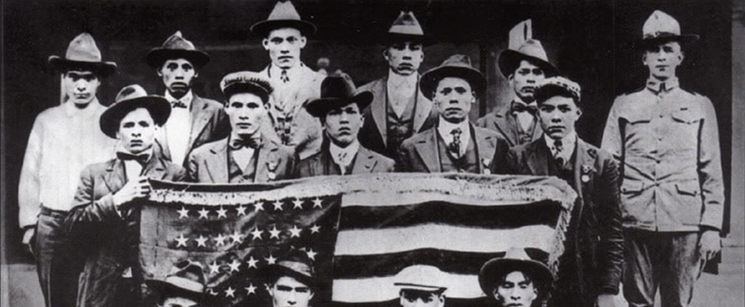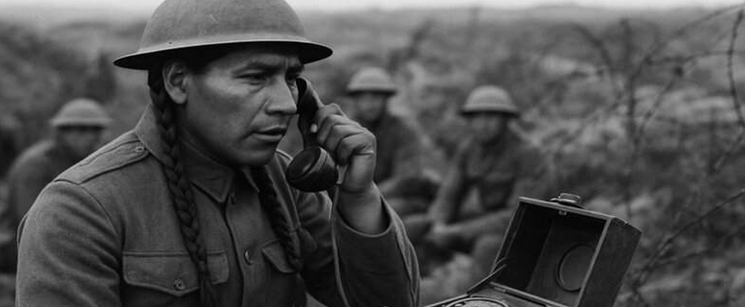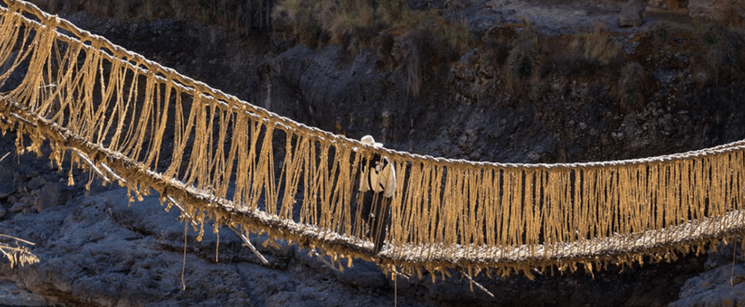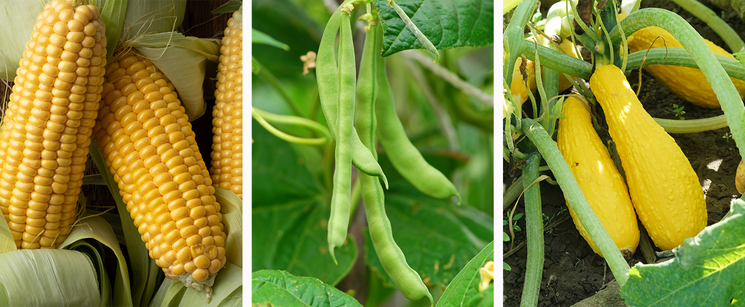
5 QUESTIONS
TIMER: 60 SECONDS PER QUESTION
Which Indigenous innovation allowed for long-distance communication during WWII?
Code talkers were Native Americans who used their tribal language to send secret communications on the battlefield. These men had to develop and memorize a unique military code using their mostly unwritten language.

Code talkers were Native Americans who used their tribal language to send secret communications on the battlefield. These men had to develop and memorize a unique military code using their mostly unwritten language.

Which Native American invention inspired the modern-day syringe?
Before colonization, Native Americans had created a method using a sharpened hollowed-out bird bone connected to an animal bladder that could hold and inject fluids into the body.

Before colonization, Native Americans had created a method using a sharpened hollowed-out bird bone connected to an animal bladder that could hold and inject fluids into the body.

Which Indigenous peoples of the Arctic invented the kayak, a watercraft still used today?
Inuit hunters in the High Arctic developed the lightweight qajaq, also known as a kayak. This invention allowed them to more easily hunt seals and whales on the water as they were able to be as stealthy and responsive when needed.

Inuit hunters in the High Arctic developed the lightweight qajaq, also known as a kayak. This invention allowed them to more easily hunt seals and whales on the water as they were able to be as stealthy and responsive when needed.

True or False: Suspension bridges were first engineered by Native peoples in North and South America long before modern steel versions.
True. The Inca Empire, known for its remarkable architectural developments, pioneered the construction of suspension bridges in the mountainous terrain of the Andes. These bridges, woven from natural grasses, plants and the wool of llamas and alpacas, were able to support significant weights.

True. The Inca Empire, known for its remarkable architectural developments, pioneered the construction of suspension bridges in the mountainous terrain of the Andes. These bridges, woven from natural grasses, plants and the wool of llamas and alpacas, were able to support significant weights.

The Indigenous agricultural method of planting _____________ together is called the Three Sisters planting method.
Developed through Indigenous agricultural practices, corn, beans and squash protect and nourish each other by enriching soil, suppressing weeds, conserving water and deterring pests.

Developed through Indigenous agricultural practices, corn, beans and squash protect and nourish each other by enriching soil, suppressing weeds, conserving water and deterring pests.

No result